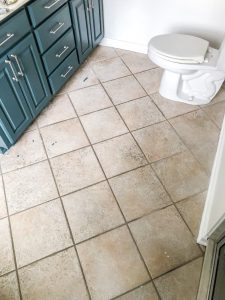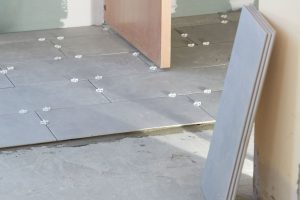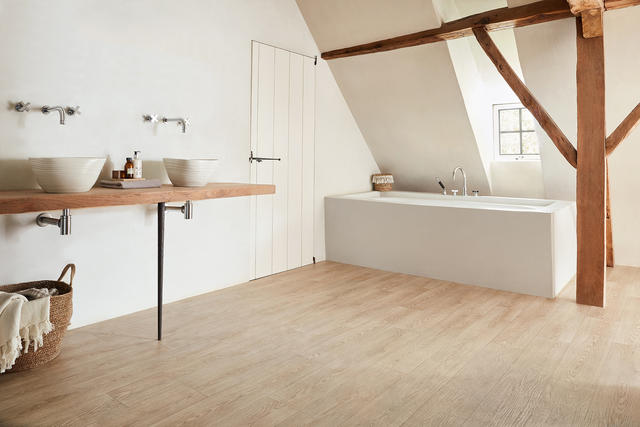Installing Flooring Before the Shower: A Comprehensive Guide
When it comes to bathroom renovations, one common question that homeowners often grapple with is the sequence of installation—specifically, whether to install flooring before or after the shower. The decision can significantly impact the overall aesthetics, functionality, and longevity of the bathroom. In this comprehensive guide, we will delve into the factors influencing this decision, the pros and cons of each approach, and provide expert recommendations to help you make an informed choice.

Factors Influencing the Decision
1. Moisture Levels
Moisture is a critical factor in bathrooms, and showers are primary contributors. Installing flooring before the shower might expose the material to excessive moisture during the construction phase, potentially causing damage or warping. On the other hand, installing the shower first allows for a more controlled environment, reducing the risk of moisture-related issues.
2. Material Compatibility
Different flooring materials have varying levels of susceptibility to moisture and water damage. For instance, hardwood flooring is more prone to warping and damage in moist environments, while tiles and vinyl are more resilient. Considering the material compatibility with water is crucial when deciding the installation sequence.
3. Seamless Design
Achieving a seamless and cohesive design is a top priority for many homeowners. Planning the installation sequence to create a continuous and visually appealing flow between the shower and flooring is essential. This involves coordinating materials, colors, and patterns for a harmonious aesthetic.
Installing Flooring Before the Shower

Pros
1. Easier Flooring Installation
Installing flooring before the shower allows for a straightforward and unobstructed installation process. This can be particularly advantageous for large or intricate flooring patterns that might be challenging to implement around a pre-existing shower structure.
2. Design Flexibility
Homeowners seeking design flexibility may find it easier to experiment with flooring options when the shower is not yet in place. This flexibility can lead to more creative choices that complement the overall bathroom design.
3. Simplified Layout Planning
Without the constraints of an existing shower, homeowners can plan the layout of the bathroom more freely. This can result in optimal spatial utilization and a more functional bathroom layout.
Cons
1. Risk of Moisture Damage
The primary concern with installing flooring before the shower is the risk of moisture damage. Construction activities, such as tile adhesive application and grouting, can introduce moisture that may harm certain flooring materials, especially those sensitive to water.
2. Limited Coordination with Shower Design
Coordinating the flooring design with the shower design may be challenging when the shower is not yet in place. Achieving a cohesive look requires careful planning and coordination, which may be more complicated in this scenario.
Installing the Shower Before Flooring
Pros
1. Controlled Moisture Environment
Installing the shower before flooring allows for better control over the moisture levels during construction. This can prevent potential damage to the flooring material, ensuring its longevity and performance in a bathroom setting.
2. Seamless Integration
Coordinating the shower and flooring designs becomes more seamless when the shower is installed first. This approach facilitates a unified aesthetic, with the shower acting as a focal point for the overall bathroom design.
3. Reduced Risk of Water Seepage
By installing the shower first, there is a reduced risk of water seepage or leaks into the subfloor. Proper waterproofing measures can be implemented during the shower installation, providing an added layer of protection for the underlying flooring.
Cons
1. Limited Flooring Options During Construction
Homeowners may feel restricted in their flooring choices when the shower is already in place. This limitation can impact the overall design and may require compromises in terms of material, color, or pattern.
2. Complex Flooring Installation Around the Shower
Certain flooring patterns or materials may pose challenges during installation when working around a pre-existing shower. Intricate cuts and adjustments might be necessary to ensure a precise fit.
Expert Recommendations
In many cases, striking a balance between the pros and cons of each approach is key to a successful bathroom renovation. Here are some expert recommendations:
1. Assess Moisture-Resistant Flooring Options
If the preference is to install flooring before the shower, consider moisture-resistant materials such as porcelain tiles, vinyl, or engineered hardwood. These materials are more resilient to moisture and provide a durable flooring solution.
2. Implement Waterproofing Measures
When installing the shower first, invest in high-quality waterproofing solutions to protect the subfloor and surrounding areas. Proper sealing and waterproof membranes can significantly reduce the risk of water damage.
3. Plan Design Elements in Advance
Regardless of the chosen sequence, plan the design elements—such as colors, patterns, and materials—in advance. This proactive approach ensures a cohesive and visually appealing bathroom that meets both functional and aesthetic requirements.
4. Consult with Professionals
Seeking the advice of experienced contractors or bathroom designers is invaluable. Professionals can assess the specific requirements of your project, offer personalized recommendations, and ensure that the chosen sequence aligns with the overall vision for the bathroom.
Conclusion
In the debate of whether to install flooring before or after the shower, there is no one-size-fits-all answer. The decision depends on various factors, including moisture levels, material compatibility, and design preferences. By carefully weighing the pros and cons of each approach and considering expert recommendations, homeowners can make an informed choice that results in a beautiful, functional, and durable bathroom renovation.

